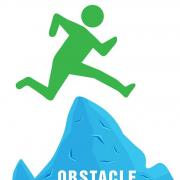In many market sectors, the journey to become more Agile is a strategic imperative. This Advisor looks at some of the reasons some organizations find this transition difficult. These challenges point to the practices, processes, and cultures of the past as potential hurdles. We suggest that, as the DNA of each organization is unique in this regard, each will need to develop a unique map of the journey toward its particular Agile goal. This transition map needs to address culture, process, and capability improvements as a way of altering this organizational DNA. Much of the wisdom of Agile is focused at the team level, yet the changes required to become an Agile organization are much greater than a single team. We therefore explain the role of the enterprise Agile coach and how this function assists with the transition to Agile.
So Why Is Becoming Agile So Hard?
The answer is because, in becoming more Agile, the organization is forced to change its operational practices; the management behaviors that are at the center of organizational culture. These are the ways in which projects have been delivered in the past.
Many of these traditional practices, when analyzed objectively, often add cost, formalize delays, create bureaucracy, and blur the lines of responsibility and control. The existing working practices — not at the team but at the enterprise level — are often the primary impediment to an organization becoming more Agile. I refer to practices such as the annual budgeting process, the project approval process, change governance, and status reporting. Historically, these mechanisms were probably introduced in the belief that managing process increased the probability of success. These practices, therefore, represent the perceived understanding and the knowledge of what was needed to deliver strategic change in your organization.
Yet, the Agile Manifesto and the Agile principles, when applied at the organizational level, will defy much of this established wisdom, making Agile operationally difficult to digest. Agile makes individuals and teams accountable and encourages the interaction of people over rigid processes. Agile practices focus on value delivery in the shortest lead time. Agile ceremonies and the perceived “process” shortcuts — the absence or inconsistent application of the organization’s perceived project and change management best practice — often cause senior management alarm and resistance to adopting the necessary changes.
Agile also has best practices that senior management can rely upon. In making the transition, you must establish executive trust in the new practices. Agile is not anarchy and, in many ways, has much stronger process elements than many traditional approaches. For example: in numerous organizations, the linkage between the strategic plans and strategy execution is weak. Agile Portfolio Management, with its emphasis on organizational value delivered, focuses investment decisions on the activities that produce the highest return. It continuously encourages those making the investment decisions and the teams delivering to consider the viability of the iterative activity. True Agile delivery practices give more opportunity to close out delivery activities than many traditional approaches. As one investment banker told me recently, “this organization is great at kicking off projects but very bad at stopping them.” Regularly checking the viability of each investment encourages teams to maximize and clearly illustrate the organizational value delivered or anticipated. In doing this, it strengthens the link between the work undertaken and the strategic plans. It is this continual verification of the change investment portfolio that provides the organizational agility; the ability to start activities and to stop activities if something appears that has great strategic priority.
Register Free for the Cutter Edge!
Register today to begin getting the Cutter Edge every other Tuesday — FREE. You'll receive research, insight, and advice in every issue. From disruption of business models, to the creation, implementation, optimization, and application of devices, software, and systems to revolutionize your business, the Cutter Edge delivers insight on the diverse tech-driven issues today's executives face. Register Now »
The second organizational impediment is that Agile steps away from the command-and-control culture and the scientific management approaches on which many organizations rely. Agile introduces a self-managed, continuously improving organization shown in the mid-to-late 20th century by both academia and business practice to increase the productivity and the efficiency of teams.
Agile introduces new roles and responsibilities. It breaks the them-and-us culture that has evolved in many firms between IT and the business functions. The concepts of collaboration and one-team may require some enterprises to embark upon organizational “healing” efforts; building trust between business functions where animosity previously existed.
Another impediment is that Agile places less emphasis on the completion of documentation. It emphasizes the need to produce just-enough documentation, just-in-time for the documents’ use. The result is that this undermines many of the processes used to underpin successful project delivery. Senior managers, stakeholders, and sponsors who took comfort from a clear line of sight from the start to the end of the activity are required to understand that the Agile techniques exercised by the product owners will deliver the maximum value in the time available. They also need to appreciate that the combination of “backlog cleansing” and MoSCoW prioritization will ensure that solutions are not gold plated and fit for purpose.
Agile is not a universal panacea. If the underlying reason why an organization had difficulty in delivering projects was interruptions from fixing production failures, then these interruptions will also impact Agile activities. However, Agile will probably make results of the interactions more explicit in terms of reductions in the metrics regarding work completed in a time box or Sprint.
Steps to Becoming More Agile
Changing the organizational DNA or culture is not insignificant and calls for careful planning, execution, and impact monitoring. This is the essence of the Agile transitional journey. An organizational transition map needs to have a clear picture of the Agile goals and lay out the steps necessary for their attainment. This map should also consider that the organization still has to deliver services or products to its clients while this transition is happening. Risk management and cultural change are at the center of this plan. The result is a unique plan for your organization. Any evidence of wholesale “cookie cutting” should give executives cause for concern.
Much of Agile happens at the team level. All the major Agile frameworks have coaching or training components that facilitate the new practices for the team. However, to become a more Agile organization, coaching is also required to help executives execute the Agile transition map at the enterprise level and to help them think through the steps necessary to reach a sustainable new working culture. Enterprise Agile coaching ensures that the transformation actions taken align with and support the corporate strategic objectives and to increase the pace of the transition.
So, what do we mean by an enterprise Agile coach? This role is a hybrid of a change manager and Agile specialist: part consultant, part embedded trainer, part trusted advisor, and part organizational “Agony Aunt.” According to the Agile principles: “at regular intervals, the team reflects upon how to become more effective and then it tunes and adjusts its behaviors accordingly.” Enterprise Agile coaching involves planning of activities but also facilitates the retrospective analysis at the organizational level. In becoming more Agile, the enterprise adopts many Agile principles and processes, including the analysis and measurement of progress toward the goal.
An organization planning to exercise agility as part of its business strategy faces internal hurdles in its culture, processes, and capability. The application of an enterprise-level coach is a means of mitigating such challenges. Organizations should ensure that the Agile transformational map prepared by such coaches is unique and relevant to their organization. Executives should never cede their market knowledge, good judgments, and instinct regarding what is right for their organization to an Agile “Santa Claus.”




